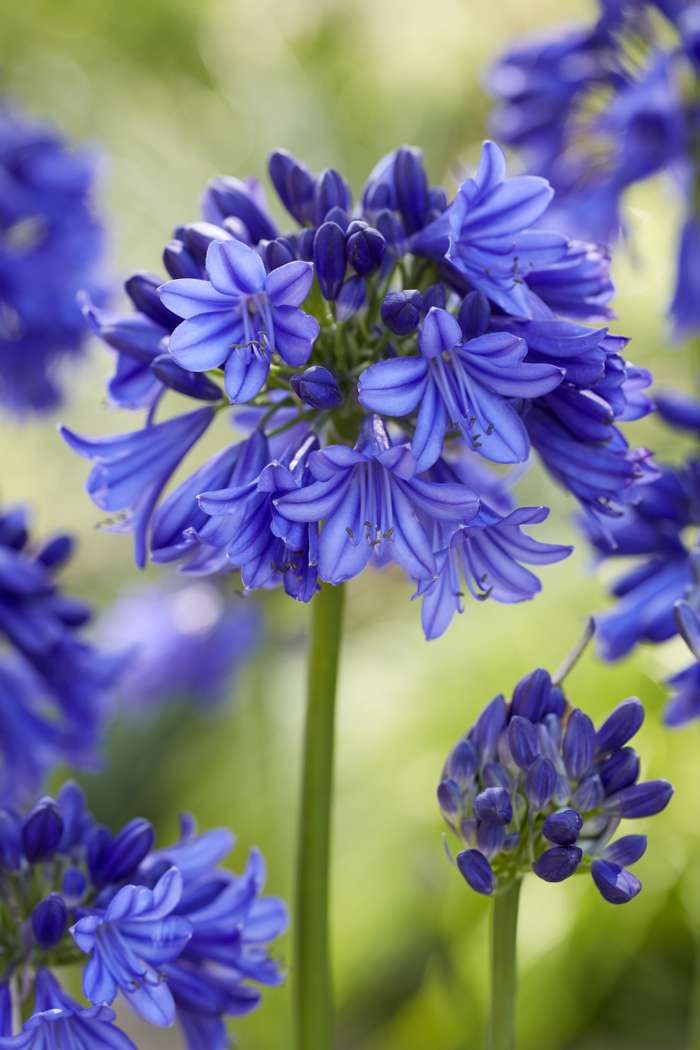Agapanthus Treatment Tips for Lush and Vibrant Flowers
Agapanthus Treatment Tips for Lush and Vibrant Flowers
Blog Article
Understanding the Art of Agapanthus Treatment: Crucial Steps for Healthy Growth and Lively Flowers
In the realm of gardening, the growing of agapanthus stands as a gratifying venture for those that seek to nurture these sophisticated flowering plants. With their striking blossoms and graceful vegetation, agapanthus has caught the attention of gardeners worldwide. However, attaining ideal growth and vivid blossoms requires a nuanced approach that encompasses different vital steps. From picking the best variety to mastering trimming methods, the trip towards growing prospering agapanthus plants is complex and holds the vital to unlocking the full possibility of these botanical gems.

Selecting the Right Agapanthus Range

When selecting the appropriate Agapanthus selection for your garden, think about elements such as environment suitability, bloom color, and development routine. Additionally, take into consideration the climate in your area to make sure the Agapanthus selection you select can grow in your specific problems. Recognizing the growth practice of various Agapanthus ranges is essential for correct placement within your garden.
Suitable Growing Conditions
Thinking about the optimal ecological needs is necessary for successful Agapanthus farming. Agapanthus plants are sensitive to chilly temperature levels and must be protected from frost throughout wintertime months.
To make sure healthy development and dynamic flowers, plant Agapanthus light bulbs at a deepness of about 2-4 inches and space them 8-12 inches apart. Mulching around the base of the plants aids preserve moisture and reduces weed growth.
Watering and Feeding Tips
Maintaining correct moisture levels and giving essential nutrients are crucial aspects in the treatment program for Agapanthus plants. When it comes to sprinkling Agapanthus, it is crucial to strike a balance. These plants prefer constantly moist dirt yet are vulnerable to root rot if overwatered.
Fertilizing Agapanthus is necessary for advertising healthy and balanced development and respected flowers. Apply a well balanced plant food, such as a 10-10-10 formula, in the early springtime as brand-new growth arises. By following these watering and feeding pointers, you can guarantee your Agapanthus plants flourish and generate vivid, resilient flowers.
Trimming Techniques for Agapanthus
Trimming Agapanthus plants at the proper times and with correct strategies is essential for maintaining their health and promoting optimal growth and flowering. The ideal time to prune Agapanthus is in late winter months or early spring prior to brand-new development arises. Begin by removing any type of yellowing or dead leaves near the base of the plant. Cut them as short as feasible without harming the arising shoots.
For flowered stems, wait till the flowers have actually withered and afterwards cut them back to the base. This not only cleans the plant's appearance yet additionally encourages the advancement of new blossom buds. Deadheading spent blossoms can also redirect the plant's power into creating even more flowers rather than setting seeds. However, go to the website if you want to accumulate seeds for propagation, leave some flowers to fully grown and dry on the plant.
Remember to make use of clean, sharp devices to make precise cuts and minimize the danger of presenting diseases. Agapanthus. Regular trimming will certainly aid keep your Agapanthus looking healthy and balanced and neat while ensuring a bountiful display screen of lovely blooms
Taking Care Of Typical Bugs and Conditions
After guaranteeing proper pruning strategies for Agapanthus, it is essential to attend to common pests and diseases that can impact the health and vitality of these plants. One usual insect that impacts Agapanthus is the Agapanthus gall midge.
An additional usual problem is reference fungal fallen leave area, which offers as dark sores on the fallen leaves. To stop fungal illness, ensure good air flow around the plants, avoid above watering, and remove any infected fallen leaves promptly. Additionally, Agapanthus plants can deal with origin rot if they are grown in badly draining soil. To stop this, plant Agapanthus in well-draining dirt and stay clear of overwatering. By being vigilant and taking prompt action against parasites and illness, you can assist your Agapanthus plants grow and produce vivid flowers.

Conclusion
In redirected here final thought, grasping the art of agapanthus treatment includes picking the appropriate variety, giving excellent planting problems, proper watering and fertilizing, ideal pruning methods, and dealing with typical pests and diseases. By adhering to these essential steps, you can make certain healthy and balanced development and dynamic blooms for your agapanthus plants. Remember to routinely keep track of and maintain your plants to promote their total health and durability.
To ensure healthy growth and vivid blossoms, plant Agapanthus light bulbs at a deepness of concerning 2-4 inches and area them 8-12 inches apart. By complying with these watering and feeding tips, you can ensure your Agapanthus plants flourish and produce vibrant, long-lasting blooms.
One typical parasite that impacts Agapanthus is the Agapanthus gall midge. In addition, Agapanthus plants can endure from origin rot if they are grown in poorly draining soil. By following these vital steps, you can ensure healthy growth and vibrant flowers for your agapanthus plants.
Report this page